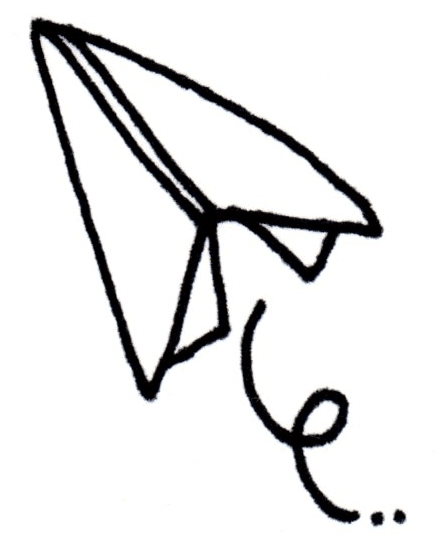Eczema-friendly clothing and laundry: What to look for if your child has eczema



The skin is in direct contact with both clothing and the inevitable detergent residues that it is holding. Making sure both the clothing and laundry residues are well tolerated is key to managing eczema flare-up and maintaining the skin between them. We look at what to look for when buying clothes for your eczema child and how to keep clothes clean and looking good without irritating their skin.
Avoid irritating fabrics
Some eczema lucky eczema sufferers can wear any fabric without a problem, but the majority find that some fabrics are too itchy to bear. To be on the safe side, it’s best to stick to cotton fabrics for your eczema baby’s clothing. Its soft fibres and breathable structure mean that it’s one of the most comfortable fabrics and has long been recommended for eczema sufferers. Light polar fleece is a good option in cold weather, while some eczema sufferers do find it irritating, most won’t have a problem with it.
Avoid wool as its wiry fibres are usually incredibly itchy for most eczema sufferers. This includes hats, scarves and coats. Synthetic materials like nylon and rayon are often too warm and not particularly breathable so should be avoided. You can find out more about eczema friendly fabrics here.

Not too warm, not too tight, not scratchy
Eczema is aggravated by heat and abrasion so opt for loose layers that can be adjusted to keep your child warm but not hot. Seams can be irritating, even if they are flat-locked. Look for loose cut designs with soft, flexible seams that aren’t held close to the skin. If seams are a problem, seam-free base-layers are available from specialist eczema clothing suppliers.
Be wary of sewn-on decorations, they often have a scratchy back covered with synthetic mesh fabric that invariably come off after a few washes. Stitched designs often end up wrinkled up after a few washes and can end up with an uncomfortable inner surface. It’s best to stick with printed designs which sit on the outer surface of the clothing. Be wary of labels printed on the inside of clothing – these inks sometimes contain latex that some people are allergic to.
Labels can also irritate, especially the stiffer, plasticky labels used by cheaper clothing brands. Be sure to remove labels before use and stick to brands with softer ribbon-type labels that are easier to cut out without leaving a scratchy bit in the seam.
Read more in our articles on comfy eczema-friendly clothing here.
Laundry detergents: A common eczema trigger
Laundry detergents are a common eczema trigger. However, it’s not usually the cleaning element of the detergent that causes the problem. Most reactions are caused by the other ingredients including optical brighteners and fragrances. When you come to think about it, this isn’t all that surprising. The cleaning chemicals are designed to lock onto the dirt and be washed away. In contrast, the optical brighteners and fragrances are designed to cling to the fibres so that they remain in the fabric after the clothes have been rinsed. Look for fragrance free detergents without optical brighteners.
Using an extra rinse cycle will reduce any remaining residues. You can also reduce the amount of detergent you use if you avoid tablets. The effectiveness of detergents is determined by the hardness of your water. Experiment to find out how much detergent you actually need to get your clothes clean. It will almost certainly be less than the amount recommended by the manufacturer. You can find more top tips on eczema-friendly laundry here.
Shifting emollient stains
Emollient stained clothing is inevitable if you have an eczema child. Build ups of emollients in fabrics can also create a fire-risk. But how do you shift these stains? This is where biological detergents come into their own. These detergents are designed specifically to shift greasy residues at lower temperatures. The enzymes in biological detergents don’t work over 40 degrees.
I know what you’re thinking at this point. However, there is actually no evidence that biological detergents aggravate eczema. A UK hospital study1 published in the British Journal of Dermatology looked into this widely held belief and found nothing to suggest that biological detergents had any effect on eczema. The alternative is to boil wash items stained with emollients, so I think you’ll agree that biological detergents are worth a try.
Avoid fabric softeners
Like fragrances and optical brighteners, the chemicals used in fabric softeners are designed to cling to the fibres and remain the fabrics after they have been rinsed. As well as irritating eczema prone skin, these laundry chemicals also clog up the fibres reducing the breathability of the fabrics.
Most of the stiffness of freshly washed clothes is down to detergent residues. Reducing residues as described above should also reduce the need to fabric softener. If your laundry is still on the crispy side, a quick blast in the tumble drier should solve the problem. Adding dryer balls to the load can help with this.
Look after your washing machine and dryer
Overtime emollient residues will can build up in your washing machine and dryer. This is specially true of the paraffin based emollients like Diprobase. These build-ups represent a fire risk and can also damage the rubber seals inside your washing machine. In a dryer, residues can gradually block up the pipes. Your insurance company may not cover this type of damage, especially it if happens more than once.
Using a biological detergent will maximise the emollient residues removed and washed away in the rinse water. Running your washing machine on the hottest wash cycle will also help to shift any build-ups. We routinely wash bedding at on the 95 degree wash cycle which seems to keep our machine residue free (and non-smelly). Avoid tumble drying clothing with heavy emollient staining, as there is vey little you can do to prevent or clear build-ups in dryers.
You can read more about eczema and washing machines here.
Our references:
- Basketter D et al. Enzymes, detergents and skin: facts and fantasies. 2008. https://pubmed.ncbi.nlm.nih.gov/18422788/
This is the round-up article for our Eczema-friendly Clothing and Laundry topic. You can find more articles on this subject by following the links in the text or by scrolling through the articles below.
Here at ScratchSleeves, we don’t just share our experiences of bringing up an eczema child and favourite allergy-friendly recipes. We also manufacture and sell our unique stay-on scratch mitts and PJs for itchy babies, toddlers and children. We now stock sizes from 0-adult years in a range of colours. Visit webshop to see our range of eczema friendly clothing for babies, children and adults.
The Calm Skin Guide
Love our blog? It's also available in book format with:
- First hand accounts from parents & medical professionals
- Easy navigation
- Comprehensive index
- Additional material
Signed copies available at no extra cost
Written by:
Interesting article? Don't keep it to yourself...
Read next...
You may also find helpful...
Quick buy


Multi Buy Discount

Spend between £30 - £60 and save 5%
Spend between £60 - £120 and save 10%
Spend over £120 and save 15%
Discount automatically applied at checkout
No Quibbles Guarantee

ScratchSleeves abide by a no quibbles guarantee.
Free UK Postage

Free packing and postage on all UK orders. For overseas orders to Europe postage is from £3.50, to USA is £6.50 and to the rest of the world, from £3.75.






